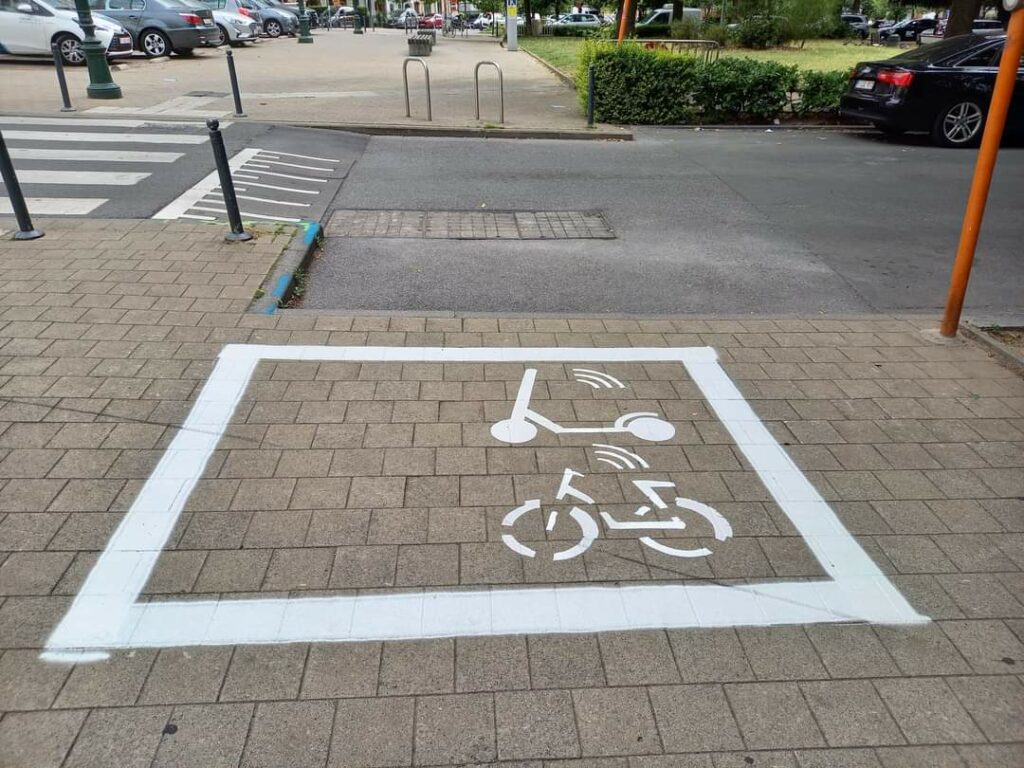As the Brussels municipality of Schaerbeek is creating 185 drop zones for sharing e-scooters and bikes, it is taking away about 1,000m² of public space from pedestrians as almost all of these zones are being drawn on pavements.
At the start of February, it became mandatory to park e-scooters in drop zones across the Brussels-Capital Region. In response, Schaerbeek announced that it created 185 of these zones, giving priority to "places that do not affect car parking, such as in unoccupied places or pavement."
"The municipal council does not dare to touch parking spaces, and is therefore holding back the modal shift," said Wiet Vandaele of 1030/0, a local citizen collective committed to road safety. He added that almost all of these drop zones are drawn on the sidewalks.
'Public space is finite'
While the citizen collective encourages alternatives to private cars, the proliferation of these new modes of transport in recent years has led to frustration and insecurity, especially among pedestrians. While Vandaele recognised that the requirement to park in these drop zones is a step in the right direction, the zones are taking away public space.
To create these drop zones, a rectangular zone of approximately 6 m² is demarcated every 300 metres, via geofencing. With its 185 zones, Schaerbeek will remove approximately 1,000 m² of space from cyclists and pedestrians – the equivalent of approximately 70 parking spaces.
However, the location of those drop zones creates new problems in terms of road safety. Nearly all of them are drawn on pavements, with some bicycle parking spots having even been converted into drop zones.
"Public space is finite, so if a new transport mode is added, other modes have to give up space. And in Schaerbeek, this means all of them except the car," said the collective.

Credit: Heroes for Zero
They have been urging the municipality to structure the public space differently, by limiting the space of passenger cars and transferring it to public transport, cyclists and pedestrians. Instead, Schaerbeek is reducing the space for cyclists and pedestrians.
"There is an iron law in traffic: if you build it, they will come," said Vandaele. "If you create cycle paths, you get cyclists. If you create car parks, you get cars. The Schaerbeek municipal council clearly does not dare to touch the space for the car and chooses the path of least resistance. In this way it undermines its own policy on modal shift and road safety."
They also underlined that this is happening in spite of the fact that the number of parking spaces in the Brussels-Capital Region must drop to below 200,000 by 2030, according to the Regional Plan for Sustainable Development.

